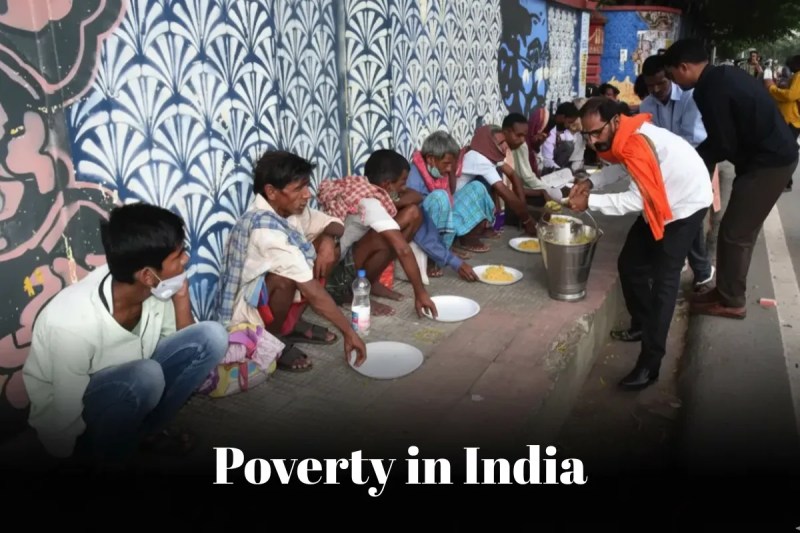
Poverty (Image: IANS)
Poverty in India: A committee formed under the supervision of former RBI Governor C. Rangarajan had stated in its 2014 report that anyone spending more than ₹47 per day in urban areas and ₹32 per day in rural areas is not 'poor'. This report had caused quite a stir at the time.
Based on this report, the number of poor people in the country was then estimated to be 29.5 percent of the total population. However, no poverty line has been prepared since the Rangarajan committee's report.
Last week, economists from the RBI's Department of Economic and Policy Research published a research paper in which they 'updated' the Rangarajan line for 20 major states of India using the government's Household Consumption Expenditure Survey (HCES) for 2022-23. The results showed that the largest decline in poverty levels between 2011-12 and 2022-23 was recorded in Odisha and Bihar. In both these states, the proportion of the population living below the updated version of the Rangarajan poverty line fell by approximately 40 percentage points.
According to a report in The Indian Express, poverty in rural areas of Odisha decreased from 47.8 percent in 2011-12 to 8.6 percent in 2022-23. This is the largest decline in any state in India. In urban areas, Bihar saw the biggest decline. 9.1 percent of the population in Bihar is below the updated poverty line. This is a decrease from 50.8 percent in 2011-12, according to the Rangarajan committee's estimates.
On the other hand, the decline in the percentage of the population below the poverty line was slowest in Kerala and Himachal Pradesh. However, poverty levels are lowest in both states. In 2022-23, the percentage of the rural population below the poverty line updated by RBI staff was 1.4 percent in Kerala, a decrease of 590 basis points (bps) from 7.3 percent in 2011-12. In urban areas, Himachal Pradesh saw the least decline.
According to the report published in The Indian Express, Himachal Pradesh had the lowest rural poverty (0.4 percent) in 2022-23, while Chhattisgarh had the highest (25.1 percent). In urban areas, Tamil Nadu had the lowest poverty (1.9 percent) and Chhattisgarh had the highest (13.3 percent).
In January of the current year, the State Bank of India Research had estimated using 2023-24 HCES data that poverty would be 4.86 percent in rural areas and 4.09 percent in urban areas. These estimates were based on an inflation-adjusted 2023-24 poverty line of ₹1,632 for rural areas and ₹1,944 for urban areas.
| State | 2022-23 (₹/month) | 2011-12 (₹/month) |
|---|---|---|
| Delhi | 2,577 | 1,492 |
| Haryana | 2,083 | 1,128 |
| Punjab | 2,048 | 1,127 |
| State | 2022-23 (₹/month) | 2011-12 (₹/month) |
|---|---|---|
| Maharashtra | 2,791 | 1,560 |
| Haryana | 2,696 | 1,528 |
| Gujarat | 2,664 | 1,507 |
| State | 2022-23 (₹/month) | 2011-12 (₹/month) |
|---|---|---|
| Jharkhand | 1,621 | 904 |
| Odisha | 1,608 | 876 |
| Chhattisgarh | 1,586 | 912 |
| State | 2022-23 (₹/month) | 2011-12 (₹/month) |
|---|---|---|
| Bihar | 2,277 | 1,229 |
| Odisha | 2,182 | 1,205 |
| Chhattisgarh | 2,149 | 1,230 |
Based on the Global Multidimensional Poverty Index (MPI), Indian MPI considers poverty based on health, education, and living standards. These are represented by 12 indicators: nutrition, child and adolescent mortality, maternal health, years of schooling, school attendance, cooking fuel, sanitation, drinking water, housing, electricity, assets, and bank accounts. The global MPI does not consider maternal health and bank accounts when measuring poverty.
In January 2024, the government stated that 24.82 crore people have been freed from multidimensional poverty in the last nine years, and multidimensional poverty has decreased from 29.17 percent in 2013-14 to 11.28 percent in 2022-23. According to the World Bank, on the international poverty line of $4.2 per day for lower-middle-income countries, India's poverty ratio would be 23.9 percent in 2022.
Published on:
19 Oct 2025 03:47 pm
Big News
View AllPatrika Special
Trending

